I have seen tombstones listing the town of birth for Irish immigrants
in Catholic cemeteries in California, for Finnish immigrants in
Lutheran cemeteries in Minnesota, and for Irish immigrants in New
York. Always try to find a tombstone or sexton’s record.
Here is a perfect example.

Online Methods for Finding
Cemetery Records
Use these Internet sites to accomplish the following steps:
Ancestry.com
- Use census records here to pinpoint a place of death.
- Possibly use information on One World Tree(SM) to locate possible
place of death.
USGenWeb.org
- Look on the state page and find county listings.
- Search for listings of the burials in all the cemeteries in
that county.
- Include the information about the cemetery and the directions
to the cemetery in your notes.
FamilySearch.org
- Use the Social Security Death Index to narrow state and sometimes
county of death plus an exact death date for those who died from
about 1960 to the present time.
- Use the Ancestral File to see if others have already listed
the death date.
- Use the Pedigree Resource File sources part (notice the CD#
and Pin# then go see the CD at the local Family History Center)
to see if others have already listed the death date.
- Use the IGI to see if others have already listed the death date.
Google.com
- Search for the name of the cemetery. Might lead you to a sexton
address to write a letter.
- Search for the newspapers discovered previously in a search
of the Union Catalog of Newspapers to see what newspapers were
published during the time period in question.
Findagrave.com
Search for an ancestor’s name or area.
Traditional Methods of Find
Tombstones
Many tombstones were made from materials that eventually wore
down, graveyards were moved, or stones were never put over a grave.
However, just like church records many of these records are available
in published genealogical collections that were gathered in the
mid-1800s before loss of information on the original tombstone.
See some of the examples below.
This image is from a DAR collection where little cards were put
together from tombstone inscriptions.
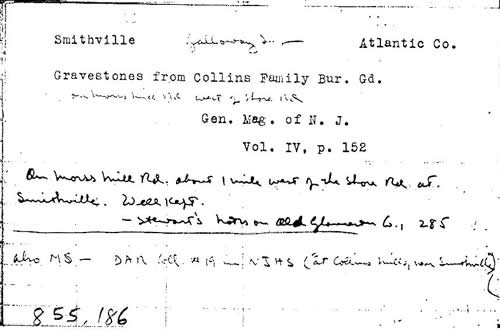
This second image was from a "Source Index of New Jersey Families"
found on film FHL 852,836. It indicates that the Agatz family was
found buried in the Presbyterian Church Yard at Westfield.
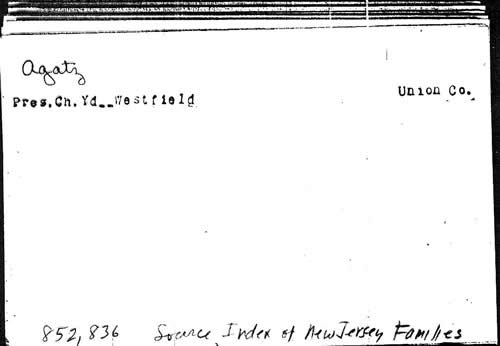
Notice this third image from the table of contents of a periodical,
The Detroit Society of Genealogical Research Magazine. Notice people
have been abstracting the cemetery records of "Crapo Cemetery
in Green Township, Macosta County, Michigan." If your census
searches have lead you to this area, you could find this resource
by searching PERSI. By writing to the Allen County Public Library
and for a small fee, they would send you the pages of this periodical.
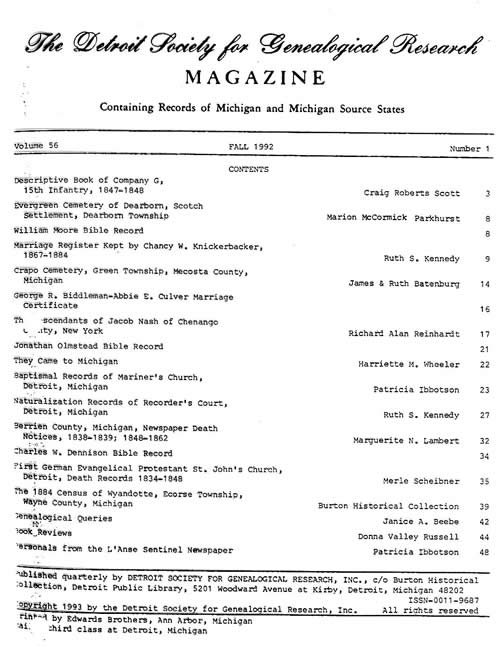
Notice also the baptismal records in Detroit, the Nationalization
records in Detroil, and Death Records in Berrien County. I love
genealogical periodicals!
One more periodical, I cannot resist. This is from the Polish Genealogical
Society of Michigan.

This periodical contained information on how to trace Polish ancestors
in general using some of the sources you are learning in this course,
but also histories of the first Polish church at Birch Creek at
the Falls in Perronville. Below are images of the first three churches
belonging to this group. While this was an early 1900s group rather
than a nineteenth century example, it was interesting because it
spoke of a donation of back water swamp land for a cemetery south
of the dam. If the dam on Ten Mile Creek were ever rebuilt, the
cemetery would be flooded. Therefore a transcript of the cemetery
stones were taken along Country Road 30. It was virtually overgrown
with many stones toppled or weathered.
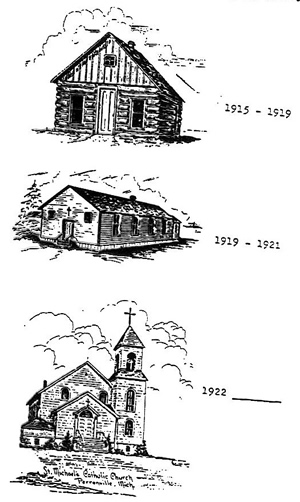
Well, maybe one more image from a Wisconsin periodical that illustrates
some wonderful church and therefore, cemetery, locators. I hope
you have seen that there are many published resources available
for the nineteenth century immigrants.
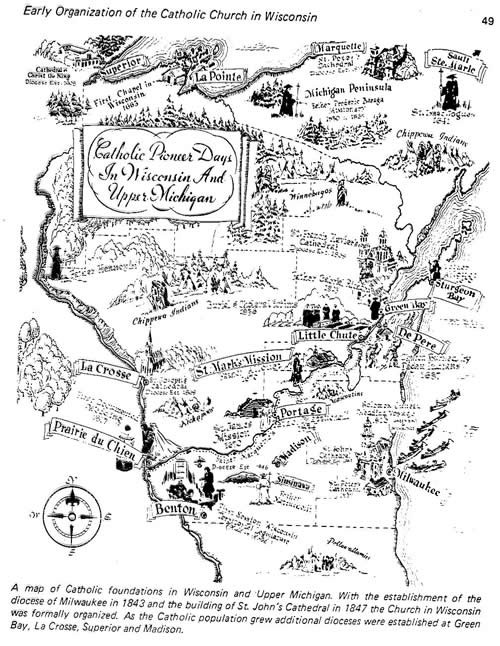
|